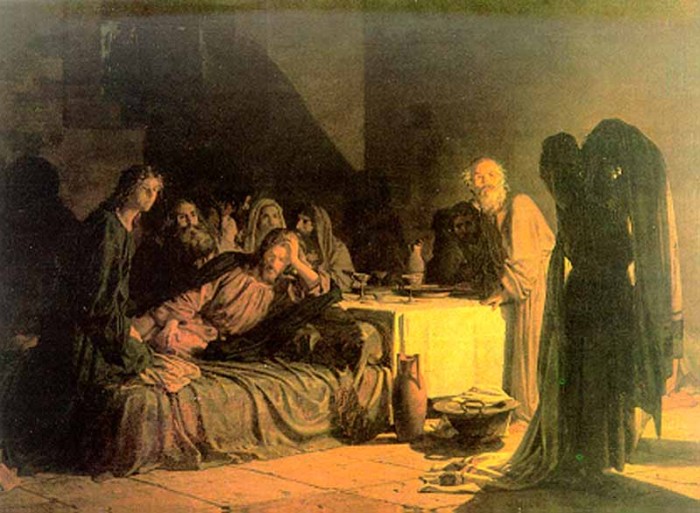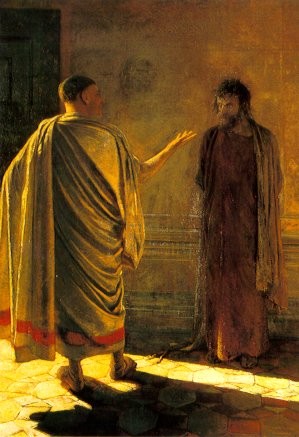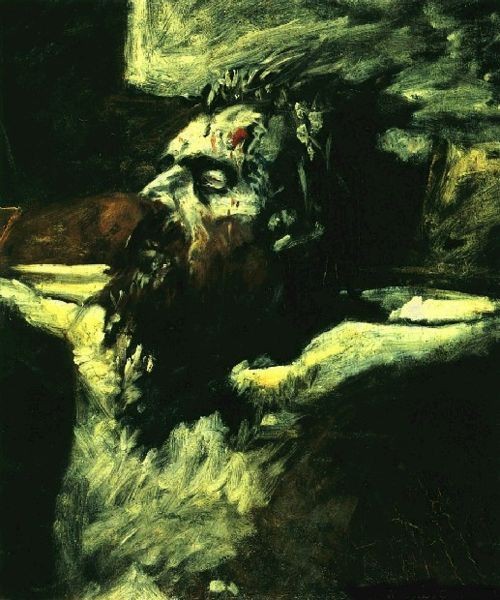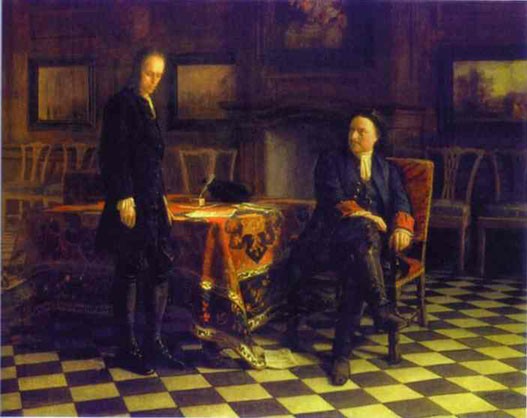Nikolai Ge (Николай Николаевич Ге) (1831-1894)
We Perform Nikolai Ge art authentication. Nikolai Ge appraisal. Nikolai Ge certificates of authenticity (COA). Nikolai Ge analysis, research, scientific tests, full art authentications. We will help you sell your Nikolai Ge or we will sell it for you.

Nikolai Ge was a Russian realist painter famous for his works on historical and religious motifs. Ge was born in Voronezh to a Russian noble family of French origin. His grandfather emigrated to Russia in the 18th century. His parents died when he was still a child, so Nikolai was raised by his serf nurse. He graduated from the First Kiev Gymnasium and studied at the physics-mathematics department of Kiev University and Saint Petersburg University.

In 1850 he gave up his career in science and entered the Imperial Academy of Arts in Saint Petersburg. He studied in academy under the historical painter Pyotr Basin until 1857. He graduated from the academy in 1857 with a gold medal for his painting The Witch of Endor Calling Up the Spirit of the Prophet Samuel. According to Ge himself, during that period he was strongly influenced by Karl Brullov.

His gold medal provided him a scholarship for studying abroad . He visited Germany, Switzerland, France and in 1860 settled in Italy. In Rome he met Alexander Andreyevich Ivanov who strongly influenced Ge. In 1861 Ge painted The Last Supper; in 1863 he took the painting with him to Saint Petersburg. Ge found his own interpretation of the classical subject — he emphasized the motif of discord among those who had formerly shared the same views. The painting (bought by Tsar Alexander II of Russia) made so strong impression that Ge was made a professor of Imperial Academy of Arts.

In 1864 he returned to Florence where he became a friend of a major Russian pro-Western writer and thinker Alexander Herzen and painted his portrait. The same year he also painted Messengers of the Resurrection and the first version of the Christ on the Mount of Olives. The new religious paintings at that time were not much of a success, and the Imperial Academy refused to exhibit them in its annual exhibition.

In 1870 Ge again returned to Saint Petersburg there he turned to Russian history for subject matter. The painting Peter the Great Interrogates Tsarevich Alexey at Peterhof (1871) was a great success, but other historical paintings were met without interest. Ge took the cold response to his work very hard. He wrote that a man should live by doing agricultural work, and the art should not be for sale. He bought a small khutor (farm) in Chernigov gubernia (currently Ukraine) and moved there. He became acquainted with Leo Tolstoy and became an enthusiastic follower of his philosophy.

In the early 1880s he returned to art producing religious paintings and portraits. He stated that everybody has a right to have a portrait so he agreed to work for whatever low commission the subject could afford. Among his portraits of the time was his famous portrait of Leo Tolstoy, portrait of Mikhail Saltykov-Shchedrin and many others.

His late paintings on New Testament subjects of that period were praised by liberal critics like Vladimir Stasov, criticized by conservatives as illustrating Ernest Renan rather than the New Testament and forbidden by the authorities for blasphemy. Quod Est Veritas? Christ and Pilate (1890) was expelled from the exhibition; The Judgment of the Sanhedrin: He is Guilty! (1892) was not admitted to the annual Academy of Arts exhibition; The Calvary (Golgotha) (1893) remained unfinished; The Crucifixion (1894) was banned by Tsar Alexander III.

Ge died on his farm in 1894. The fate of many of his works remains a mystery. At the end of his life Ge bequeathed all of his works to his Swiss benefactor Beatrice de Vattville in exchange for a small rent during his lifetime. She died in 1952 but none Ge’s work were found in her castle. Among the lost works is Ge’s supposedly magna opus painting The Crucifixion. Ge’s drawings were found by art collectors in Swiss secondhand stores late as 1974. Still wondering about a 19th century painting or drawing in your family collection? Contact us…it could be by Nikolai Ge.
Reviews
1,217 global ratings
5 Star
4 Star
3 Star
2 Star
1 Star
Your evaluation is very important to us. Thank you.
